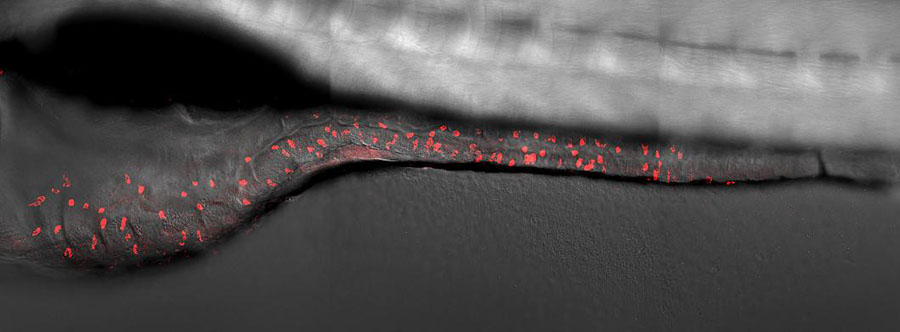IRP researchers create genetic atlas detailing early stages of zebrafish development
Researchers at the National Institutes of Health have published an atlas of zebrafish development, detailing the gene expression programs that are activated within nearly every cell type during the first five days of development, a period in which embryos mature from a single cell into distinct cell types. These diverse cells become tissues and organs that form juvenile fish capable of swimming and looking for food. The findings are published in Developmental Cell.
“Perhaps surprisingly, tiny zebrafish provide us with significant insight into human development and disease. Many of the gene expression programs that direct embryonic growth are similar across fish, people, and other animals,” said Christopher McBain, Ph.D., scientific director of the Eunice Kennedy Shriver National Institute of Child Health and Human Development (NICHD), which conducted the work. “Since zebrafish are visibly transparent, fertilize eggs externally, and are easy to study genetically, they represent a unique and effective way to model human disease.”
The process of embryonic development is orchestrated by instructions in DNA that direct different programs of gene expression within individual cells, which give different cell types their unique functional characteristics. To create the atlas, the study team used a method called single-cell RNA sequencing to identify gene expression programs over the course of five days, with samples taken every two to 12 hours. The resulting atlas follows nearly 490,000 cells continuously over 120 hours after fertilization, with an average of 8,621 transcripts and 1,745 genes detected per cell. The study team then sorted these data among known cell types and cell states during development.

BEST4+ cells are labelled red along the zebrafish gastrointestinal tract. These understudied cells are linked to gastrointestinal diseases and cancer in people.
This page was last updated on Monday, December 18, 2023